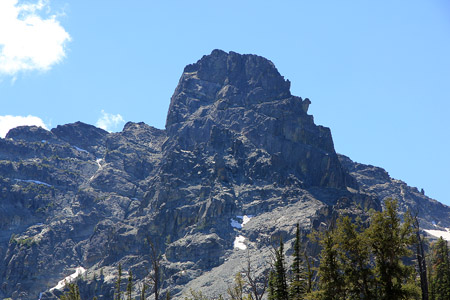He/She Devil
- He/She Devil
- 2865 m
- Primary factor 1591 m
- Idaho, USA
- Location HE: North 45:19.422, West 116:32.937 (GPS at the summit)
- Location SHE: North 45:19.440, West 116:32.437 (GPS at the summit)
- Difficulty: YDS class 3.
- Climbed August 14. 2010

He/She Devil
|

|